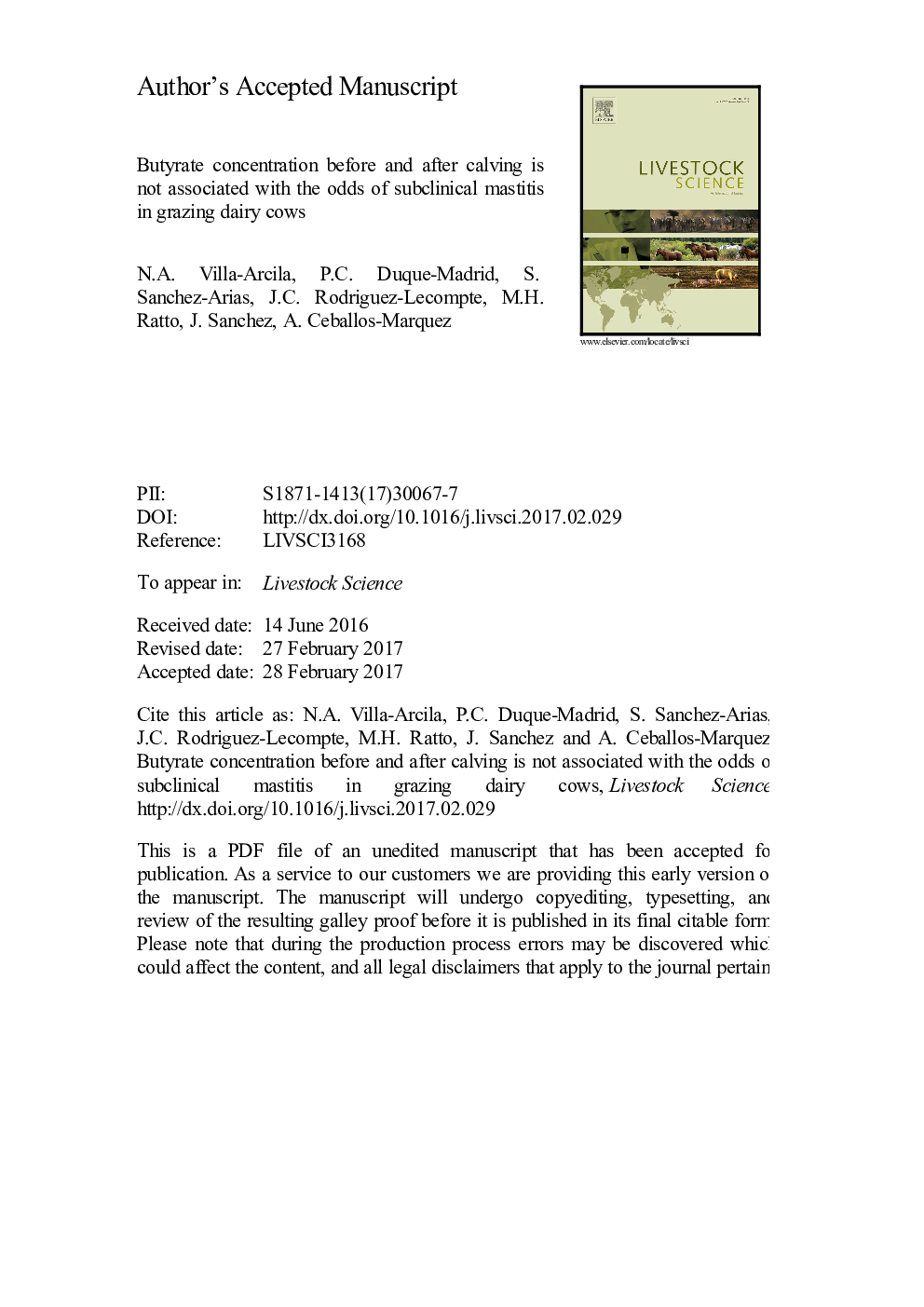| Article ID | Journal | Published Year | Pages | File Type |
|---|---|---|---|---|
| 5543146 | Livestock Science | 2017 | 35 Pages |
Abstract
The aim of this study was to evaluate the association between serum β-hydroxybutyrate (BHB) concentration around calving and the odds of developing an intramammary infection (IMI) in the first month of lactation in Holstein and Normande grazing dairy cows. In total, 208 cows were selected from five Colombian dairy herds. Two composite milk samples were collected from each cow at drying-off, and every week during the first month in milk. One sample was used for the analysis of somatic cell count (SCC), and the other for bacteriological culture. An IMI was defined as the situation in which an elevated SCC (â¥100,000 cells/mL for primiparous and â¥200,000 cells/mL for multiparous cows) was followed by the isolation of a mastitis pathogen in the same sample. Blood samples from each cow were also collected at drying-off, one week before calving, and then weekly for one month after calving. Serum samples were analysed for BHB concentrations. Multivariate logistic regression models were used to establish the association of the prevalence of IMI around calving with the BHB concentration one week before the expected date of calving. The arithmetic average of SCC at drying-off was higher than the average in the first month of lactation. The most common isolated pathogens were Staphylococcus aureus, non-aureus staphylococci (NAS), and Streptococcus uberis. The incidence risk of hyperketonemia (i.e. serum BHB >1.2 mmol/L) was 12% around calving. There was no association between serum BHB concentration and the probability of having an IMI after calving. Our results suggest that subclinical mastitis around calving was not associated with the energy balance, evaluated by serum BHB concentration one week before the expected date of calving.
Related Topics
Life Sciences
Agricultural and Biological Sciences
Animal Science and Zoology
Authors
N.A. Villa-Arcila, P.C. Duque-Madrid, S. Sanchez-Arias, J.C. Rodriguez-Lecompte, M.H. Ratto, J. Sanchez, A. Ceballos-Marquez,
